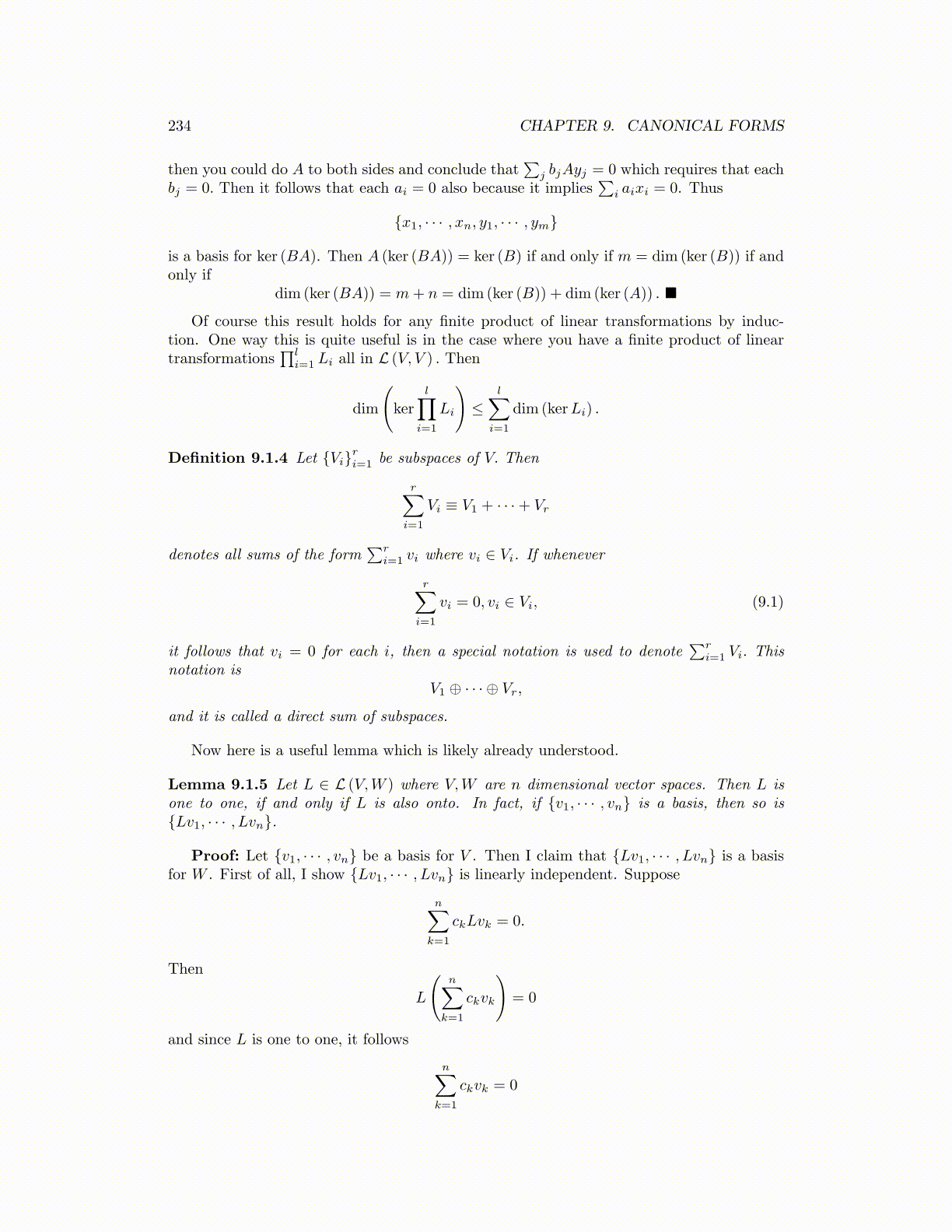
234 CHAPTER 9. CANONICAL FORMS
then you could do A to both sides and conclude that∑
j bjAyj = 0 which requires that eachbj = 0. Then it follows that each ai = 0 also because it implies
∑i aixi = 0. Thus
{x1, · · · , xn, y1, · · · , ym}
is a basis for ker (BA). Then A (ker (BA)) = ker (B) if and only if m = dim (ker (B)) if andonly if
dim (ker (BA)) = m+ n = dim (ker (B)) + dim (ker (A)) . ■
Of course this result holds for any finite product of linear transformations by induc-tion. One way this is quite useful is in the case where you have a finite product of lineartransformations
∏li=1 Li all in L (V, V ) . Then
dim
(ker
l∏i=1
Li
)≤
l∑i=1
dim (kerLi) .
Definition 9.1.4 Let {Vi}ri=1 be subspaces of V. Then
r∑i=1
Vi ≡ V1 + · · ·+ Vr
denotes all sums of the form∑r
i=1 vi where vi ∈ Vi. If whenever
r∑i=1
vi = 0, vi ∈ Vi, (9.1)
it follows that vi = 0 for each i, then a special notation is used to denote∑r
i=1 Vi. Thisnotation is
V1 ⊕ · · · ⊕ Vr,
and it is called a direct sum of subspaces.
Now here is a useful lemma which is likely already understood.
Lemma 9.1.5 Let L ∈ L (V,W ) where V,W are n dimensional vector spaces. Then L isone to one, if and only if L is also onto. In fact, if {v1, · · · , vn} is a basis, then so is{Lv1, · · · , Lvn}.
Proof: Let {v1, · · · , vn} be a basis for V . Then I claim that {Lv1, · · · , Lvn} is a basisfor W . First of all, I show {Lv1, · · · , Lvn} is linearly independent. Suppose
n∑k=1
ckLvk = 0.
Then
L
(n∑
k=1
ckvk
)= 0
and since L is one to one, it follows
n∑k=1
ckvk = 0